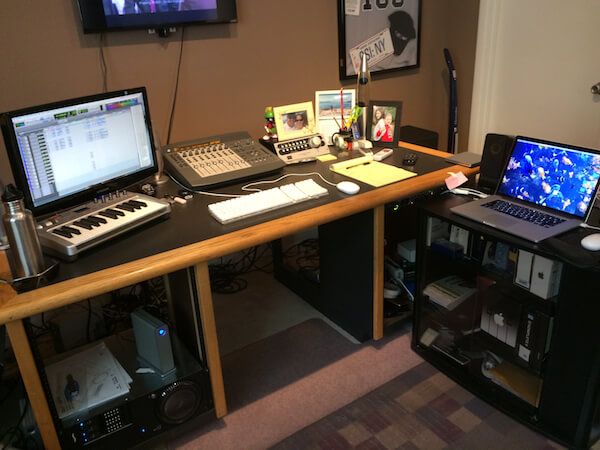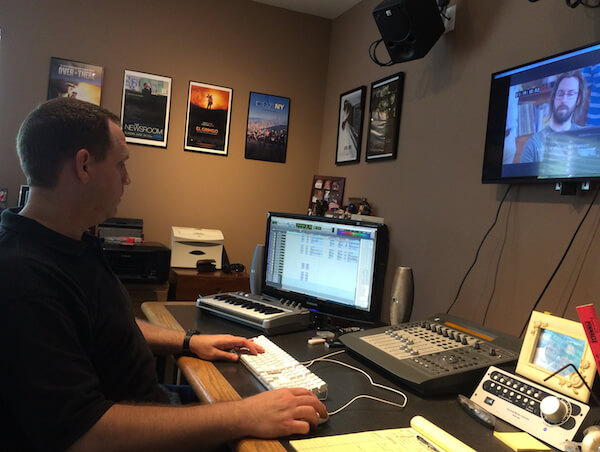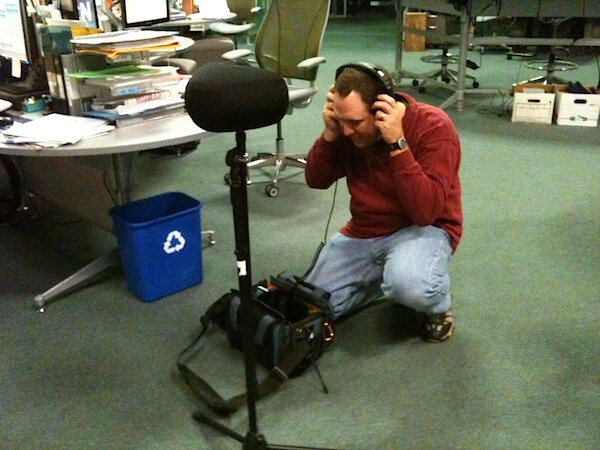The Pro Sound Effects How I Work series (inspired by Lifehacker) asks Hybrid Library owners what inspires them and what tools and routines help them get work done from day to day.
This interview is How I Work #5 - see link below for other interviews in the series.
Name: David Barbee
Occupation: Freelance Sound Designer & Editor
Location: Los Angeles, CA
Most Recent Projects: Silicon Valley (HBO), Scorpion (CBS), Blindspot pilot (NBC)
DAW of Choice: Pro Tools
What is your current studio/workspace setup like?
• Pro Tools HD 5.1 editing suite
• Mac Pro 8-core
• an old Command-8 as my control surface
• SPL 5.1 monitor controller
• HD Omni I/O
• Oxygen 8 MIDI keyboard for design work
I have all my sound design software on a laptop as well, keeping me mobile. You never know when you’ll need to work on a lot, or on a mix stage. I don’t want to lose any of my design abilities because I’m away from my home studio.
I don’t do a lot of field recording, but I keep a Zoom H4N hand-held recorder with me a lot of the time. Sometimes, I’ll run around my house recording something I need. Whenever I travel, it comes with me. You never know when you’re going to run into some sound that’s very unique!
How long have you been a freelancer?
I have done freelance work on the side for several years. But, I didn’t start working principally freelance until the summer of 2014, when the company I had been with for 19 years went bankrupt. Maybe I’ll find a studio home again someday, or maybe not!
What is one thing you know now you wished you had known 5 years ago?
I think that working in sound is a constant evolution. I’m always looking for new and better ways to do everything I do. So, it’s tough to point to any one thing that I wish I had known. I think I’m a better sound editor and designer now than I was 5 years ago. I hope that 5 years from now, I will be better still!
What software/hardware/gadgets can you not live without?
Wow, there are so many to choose from! Soundminer is critical, so I don’t spend all my days trying to organize material! For nuts and bolts sound effects editing, iZotope RX, Waves REQ-4 EQ, Soundshifter pitch shifter, and Speakerphone are all critical. (I think Speakerphone is amazing!) For design, a lot depends on what the project needs. I like to keep a lot of toys at my finger tips. For plugins, I use the Waves sound design bundle quite a bit. Even some of the basic Avid plugins, like Vari-fi for instance, can be helpful. Outside of Pro-Tools, a big favorite of mine is Propellerhead’s Reason. iZotope’s Iris, Soundmorph’s Timeflux, Apple’s Logic, and even a few cool iPad apps have found their way into my projects.
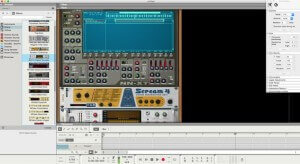 |
|
Designing in Reason
|
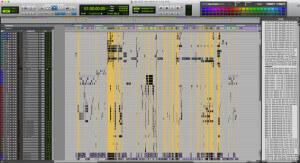 |
|
Scorpion edit session
|
Where do you find inspiration for your sound design work?
With any project I do, I need to have a direction in mind of where I want to go, while staying open to totally changing my plan if I discover something better. If I’m having trouble hearing it in my head when I first look at it, I’ll sometimes do something that may seem a little nuts. I’ll play a scene and I will literally vocalize what seems right, trying different approaches until I find a potential fit. Once I hear it in my head, I start trying to figure out how to get what’s in my head into my tracks, by searching the library for the right sound, and the right processor(s) to help it along. Often, I end up heading off in directions I never would have anticipated.
Sometimes, I’ll just start going through pre-sets on some of the software I have, and see what they sound like. When I’m really stuck, I’m not afraid to listen to the work of others to hear what directions they went. In many instances, doing so gives me just the kick start I need to get my own creative process going.
What’s your favorite time-saving shortcut/tool?
I can’t emphasize enough how critical it is to have the right sound in the first place! Soundminer helps that, but you have to know what’s in your library and be organized so you can find a sound quickly. Also, for working in TV, using a template session is a must. You have to have all those established sounds someplace easy to grab and go.
What's a typical day like for you?
Typical??? What’s that mean??? Ha!
Every day is different. Am I cutting BGs? (backgrounds) Hard FX? Doing design? Do I have to stop to go to a spotting session? And, working from home means that sometimes I’m stopping to spend some time with my family, requiring me to juggle time and make it up elsewhere. It’s a never ending puzzle.
What are your top 5 films of all time?
Tough question. There are so many great films to choose from! And a lot depends on what criteria is being used. For instance, I LOVE the original 12 Angry Men, but I wouldn’t recommend it for the sound work! Seeing as how this is about how I work, here are 5 movies that influenced me as a sound editor and designer…
1. Star Wars — The first time I saw it, I was a kid in a drive-in theater, the kind where you would hang a speaker on the inside of your car door to hear the movie. Even then, I was floored! The love of Star Wars is part of what led me to this career.
2. The Matrix — A total game changer. It seems like every action movie made since has tried to imitate it. The Matrix taught me the importance of finding a singular moment in sound, isolating the most important thing, no matter how long or short the event is, and losing all the rest.
3. Saving Private Ryan — Another game changer. No war movie has been done the same since. It’s a fabulous example of how to use sound effects alone to maximize impact… even if that means almost no sound at all. The music is used in careful, tasty places. Overall, it’s sonically stunning.
4. Amélie — Showed me how to make the ordinary sound extraordinary. Truly inspiring work.
5. Star Trek — First a disclaimer, I helped out on this movie for a short time. But, experience is often the best teacher. Working with those remarkably talented people taught me a ton! I had my eyes opened to a level of detail and sonic variety that I hadn’t really considered before, and I had to adapt to quickly. I learned more in a few short weeks on that movie than I had learned in the several years prior. It was an experience I’ll never forget.
Tell us about how the Hybrid Library fits in with your sound effects library. How do you use the Hybrid Library?
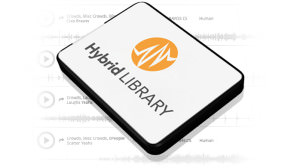 Like I said earlier, having the right sound to start with is the biggest step in editing or design.
Like I said earlier, having the right sound to start with is the biggest step in editing or design.
The Hybrid Library gave me an excellent selection of a wide variety of sounds for a reasonable price. They find their way into my projects regularly.
Where's the best place for people to follow your work or contact you?
Twitter: @soundfxman14
Email: dbarbee14@me.com
LinkedIn: linkedin.com/pub/david-barbee/b/147/973
IMDb: imdb.com/name/nm1545749/
→ Check out other interviews in the How I Work series archives!
Follow Pro Sound Effects on Twitter, Facebook, & LinkedIn for more sound designer interviews, industry news, and library releases!



